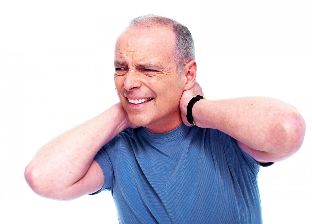As with other back diseases, grade 1 cervical osteochondrosis is characterized by pain. The nature of the pain can be described as tolerable, but it does not cause the disease to leave without the need for medical help and further treatment. Ignoring the symptoms of osteochondrosis, which is still stage 1, can lead to worsening of the patient's condition and further development of the disease.
Self-medication is not recommended, only an experienced physician can make the correct diagnosis, determine the cause of the symptoms of the disease, and give clear recommendations for the treatment of osteochondrosis.
Causes of the disease
Underlying osteochondrosis of the 1st degree of the cervical spine is primarily caused by shooting pains called lumbago. Pain syndrome occurs in the neck region, in severe cases spreading to the shoulder, arm and chest muscles. This is because intervertebral discs are usually more severely damaged when the movable part of the spine (neck region) is connected to the less mobile, chest region.

The cervical region consists of 7 vertebrae. The first two support the skull, so one can turn one’s head, tilt it, and lift it. The vertebrae are connected by joints and movable ligaments, and intervertebral discs made of cartilage tissue serve as spacers between the vertebrae. Adjacent muscles are also designed to keep the spine in a vertical position, if the muscle ligament is well developed, the spine will be stable. As can be seen, the well-coordinated work of the vertebrae, intervertebral discs, and muscles ensures the healthy functioning of the spine. As soon as one of the links in this system begins to fail, the entire work of the spine becomes disrupted.
Why violations can occur and the first symptoms of osteochondrosis appear:
- sedentary lifestyle;
- excessive physical activity;
- bad situation during sleep;
- a diet that does not provide the body with sufficient amounts of musculoskeletal strengthening substances;
- bad habits;
- stress;
- lack of proper rest, fatigue;
- common hypothermia and colds.
If the muscles that hold the spine in a stable position age and lose their tone by the age of nearly 50, this is considered normal. But when the cervical vertebrae undergo a deformation process at the age of 20, it is worth paying attention and taking action. You should undergo preventive treatment, exercise, lead an active lifestyle, and avoid sedentary work with a bent neck and back.
Symptoms
To list the main signs and symptoms that can accurately define cervical osteochondrosis in grade 1, you need to clarify the concept itself.
Grade 1 osteochondrosis is an initial stage of the disease that has so far been characterized only by compression of the cartilage tissue in the intervertebral discs. The vertebrae are still in a stable position, but the hook-shaped processes in the vertebrae are becoming larger in size. Dislocation of the disc is minimal, but the outer shell of fibrous tissue begins to shrink, which, if left untreated, can lead to the development of later stages of osteochondrosis and even to the intervertebral vertebra.
Main symptoms of osteochondrosis of the cervical spine:
- pain syndrome begins in the neck region and spreads to the shoulder joints, shoulder blades, and pectoralis muscles;
- compression of nerve endings leads to the appearance of shooting pain in the neck, this condition is exacerbated in particular by sleeping, unpleasant posture at night, after waking up the patient keeps his neck in an unnatural position for a long time as it is impossible to turn his head painlessly;
- Cardiac syndrome may occur as a result of compression of nerve roots - pain in the pectoralis muscle that a person confuses with pain in the heart (the test does not confirm the presence of heart pathologies);
- due to the vertebral artery syndrome, the blood supply to the brain and spinal cord deteriorates, causing headaches, visual disturbances in the form of "flies before the eyes", dizziness, pain in the occipital region;
- sleep disorders;
- worry.

Pain syndrome is accompanied by muscle cramps in the affected spine. Grade 1 spinal osteochondrosis may not provide the pronounced symptoms listed, it all depends on the body’s sensitivity to pain and the overall well-being of the patient.
In case of constant fatigue, sedentary work and stress, any symptoms of the disease can be perceived more sharply. Therefore, the very first sign of osteochondrosis — after a shot of neck pain, especially after physical exertion or hypothermia — may be the reason for a doctor’s visit.
Treatment and Prevention
Therapy for grade I cervical osteochondrosis should primarily be aimed at eliminating the pain syndrome and initiating active metabolic processes in the tissue of the intervertebral discs. In addition, it is imperative to strengthen the neck muscle skeleton so that the spine is in a stable, strong position.
Medication involves the following methods:
- analgesics, anti-inflammatory drugs;
- physiotherapy;
- massage;
- acupuncture;
- medical gymnastics;
- swimming.
Medication should be used to relieve pain and inflammation in the affected area, in which case the doctor may combine the appointment of oral anesthetics with injections of vitamin, anti-inflammatory drugs. The use of external agents in the form of warming gels based on analgesics and the venom of bees and snakes have a good effect.
Medication therapy and physiotherapy supplements can be therapeutic exercises that help gently stretch the spine, relieving pinched nerve roots and relieving neck pain. Subsequent preventative measures include avoiding a healthy, active lifestyle, exercise, proper nutrition, and stress and hypothermia.























